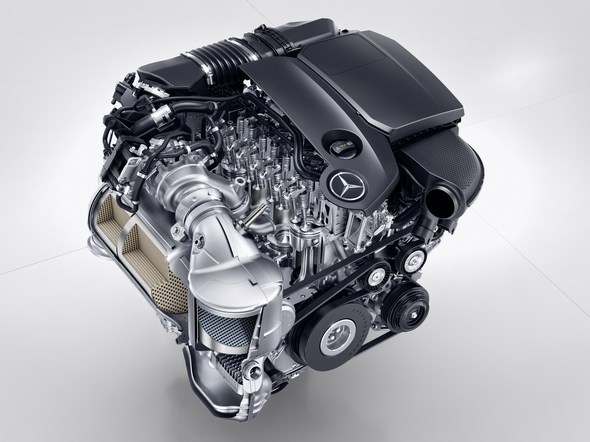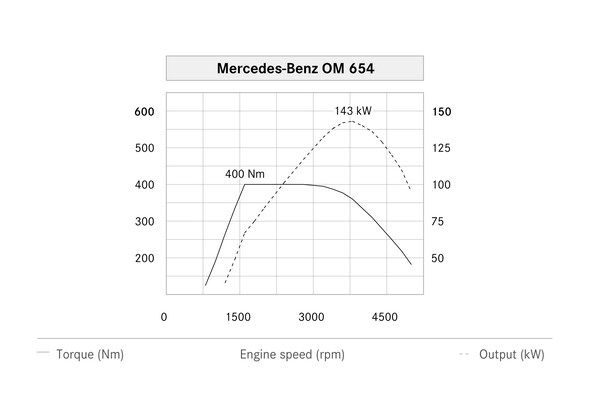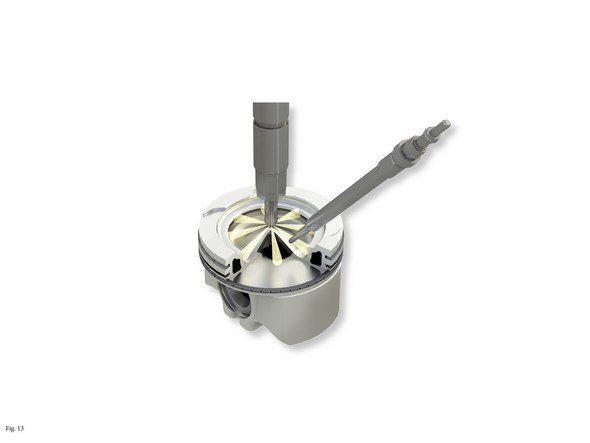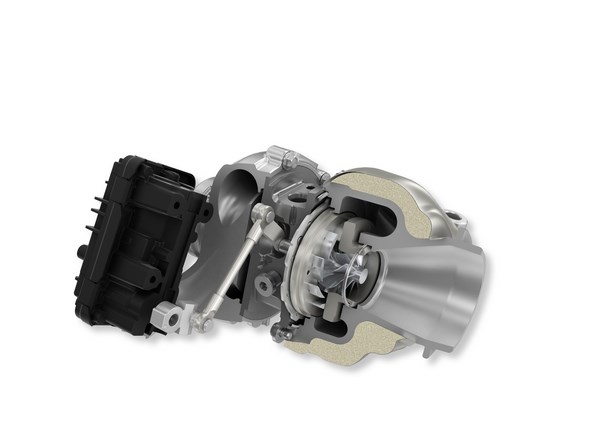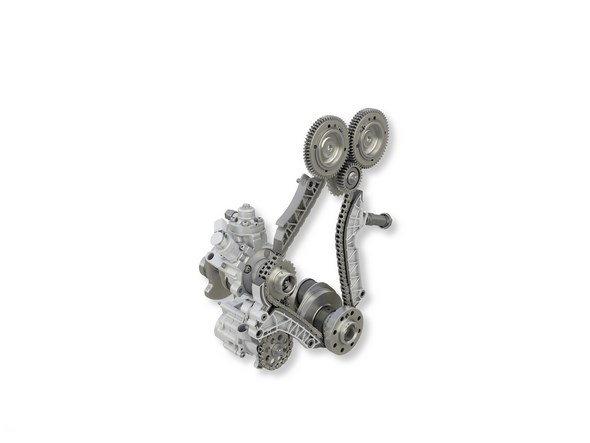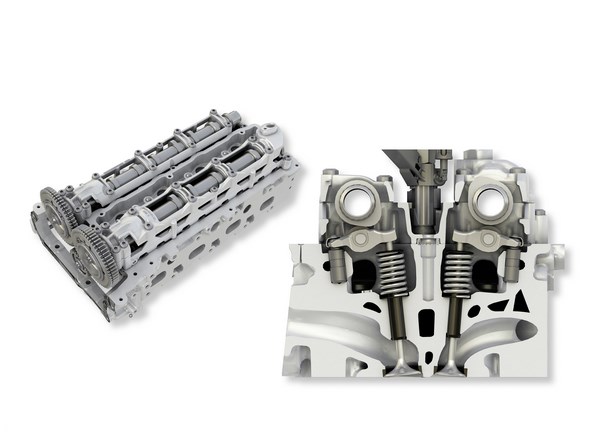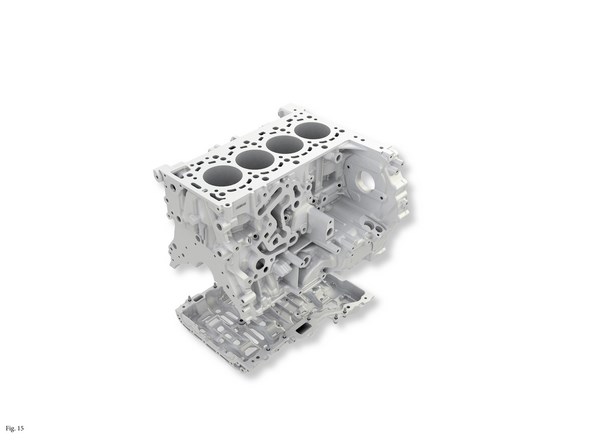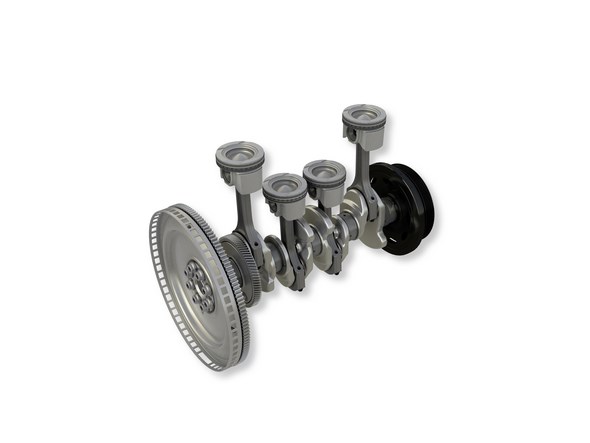The diesel future begins in the Mercedes-Benz E-Class

More economical and powerful, more lightweight and compact
Stuttgart. The new four-cylinder diesel unit OM 654 marks the debut of a ground-breaking family of engines from Mercedes-Benz.
Exemplary efficiency and emissions ensure that the premium diesel is future-proof while underlining the key role to be played by the diesel engine in achieving the challenging global climate targets.
The first all-aluminium four-cylinder diesel engine from Mercedes-Benz celebrates its world premiere in the new E-Class E 220 d in spring 2016.
“The new family of engines embodies over 80 years of Mercedes-Benz diesel know-how.
The new premium diesels are more efficient and powerful, lighter and more compact – and they are designed to meet all future global emissions standards,” says Prof. Dr. Thomas Weber, member of the Daimler Board of Management with responsibility for Group Research and Head of Mercedes-Benz Cars Development.
“In our opinion, the diesel engine is indispensable in trucks and cars if we want to further reduce the CO2 emissions from traffic.”
In its road map towards sustainable mobility, Mercedes-Benz attaches key importance to the optimisation of modern internal combustion engines alongside hybrid and electric vehicles.
In particular, the economical, clean and, especially in Europe, highly popular diesel engine makes an important contribution to the further reduction of fleet consumption.
Mercedes-Benz is on the right track. In two decades since 1995, the average consumption of the passenger car fleet has fallen by almost half from 9.2 l/100 km (230 g CO2 /km) to 5.0 l/100 km (125 g CO2/km).
Already today, Mercedes-Benz Cars has 68 models that emit less than 120 g/km – and 108 models with the efficiency label A+ or A.
The modular family of engines will find broad application across the entire range of Mercedes-Benz cars and vans.
There are plans for several output variants as well as longitudinal and transverse installation in vehicles with front-, rear- and all-wheel drive.
This, too, makes the new engine so significant, because the improvements in efficiency have a direct impact on Mercedes-Benz’s fleet consumption.
Another of the objectives behind the new generation of engines was to reduce the number of variants as far as possible.
The engine’s compact dimensions allow even more flexibility in adapting to different vehicle models. The interfaces between drive unit and vehicle have been standardised across all model series.
More especially, all the elements of the exhaust aftertreatment system are now configured directly on the engine itself and no longer on the vehicle.
The new four-cylinder engine OM 654 is celebrating its world premiere as the 220 d in the new E-Class in spring 2016.
The bottom line is that the new engine delivers around 13 percent lower fuel consumption and CO2 emissions along with a further increase in output (143 kW instead of 125 kW).
The most important innovations of the new engine:
- first all-aluminium construction of a four-cylinder diesel engine
- steel pistons with stepped combustion bowls, NANOSLIDE® cylinder coating, fourth-generation common rail injection
- all exhaust treatment technologies configured directly on the engine
- significantly lighter and more compact: 168.4 kg vs. 202.8 kg (-17%), two-litre displacement instead of 2.15 litres, cylinder spacing 90 mm vs. 94 mm
- lower noise level and outstanding vibration comfort thanks to a raft of measures
Exhaust emissions: all set for the future
The new diesel engine is designed to meet future emissions legislation (RDE – Real Driving Emissions).
In contrast to the current NEDC measurement cycle, the WLTP (Worldwide harmonized Light vehicles Test Procedure) cycle is aimed at ensuring that the figures for standard and real-world consumption are close together in future.
In addition, it is planned in Europe to introduce a measuring procedure for Real Driving Emissions (RDE). This, too, is actively supported by Mercedes-Benz.
All components of relevance for efficient emissions reduction are installed directly on the engine.
Supported by insulation measures and improved catalyst coatings, there is absolutely no need for engine temperature management during cold starting or at low load.
In addition to the advantages in terms of emissions, this results in fuel savings, especially on short journeys.
Thanks to the near-engine configuration, exhaust aftertreatment has a low heat loss and optimal operating conditions.
The new engine is equipped with multiway exhaust gas recirculation (EGR). This combines cooled high-pressure and low-pressure EGR.
It makes it possible to significantly further reduce the untreated emissions from the engine across the entire engine map, with the centre of combustion being optimised for fuel economy.
The exhaust gas from the turbocharger is sent first to a diesel oxidation catalyst. It next passes the downdraft mixer, in which AdBlue® is added by means of a water-cooled dosing module.
Thanks to a specially developed mixing area, the AdBlue® evaporates over the shortest possible distance in the exhaust gas stream and is distributed very uniformly on the surface of the downstream sDPF (particulate filter with coating to reduce nitrogen oxides).
Positioned behind the sDPF is an SCR catalyst for further catalytic reduction of the nitrogen oxides. Only then does the treated exhaust gas enter the exhaust system.

New generation of premium diesel engines from Mercedes-Benz
The new four-cylinder diesel unit OM 654 marks the debut of a ground-breaking family of engines from Mercedes-Benz. The development goals were defined more than four years ago.
The result is a modular concept with a special focus on integration of the drive into different models as well as a series of innovations on the basic engine.
Exemplary efficiency and emissions ensure that the premium diesel is future-proof while underlining the key role to be played by the diesel engine in achieving the challenging global climate targets.
The first all-aluminium four-cylinder diesel engine celebrates its world premiere in the new E-Class.
Defined in 2011 in the technical specifications for the new Mercedes powertrain architecture, the demanding development goals were implemented in design and development.
“The new family of engines embodies over 80 years of Mercedes-Benz diesel know-how. The new premium diesels are more efficient and powerful, lighter and more compact – and they are designed to meet all future global emissions standards,” says Prof. Dr. Thomas Weber, member of the Daimler Board of Management with responsibility for Group Research and Head of Mercedes-Benz Cars Development.
“In our opinion, the diesel engine is indispensable in trucks and cars if we want to further reduce the CO2 emissions from traffic.”
The bottom line is that the new engine delivers around 13 percent lower fuel consumption and
CO2 emissions along with a further increase in output (143 kW instead of 125 kW).
The most important innovations of the new engine:
- first all-aluminium construction of a four-cylinder diesel engine
- steel pistons with stepped combustion bowls, NANOSLIDE® cylinder coating, fourth-generation common rail injection
- all exhaust treatment technologies configured directly on the engine
- significantly lighter and more compact: 168.4 kg vs. 202.8 kg (-17%), two-litre displacement instead of 2.15 litres, cylinder spacing 90 mm vs. 94 mm
- specific output up to 90 kW
- lower noise level and top vibration comfort thanks to a host of measures
Manufactured since 2008, the current four-cylinder unit OM 651 is the most-produced engine in the history of Mercedes-Benz.
The engine is available from the A-Class to the S-Class, in the V-Class and in the Sprinter van. This, too, makes the new engine so significant, because the improvements in efficiency have a direct impact on Mercedes‑Benz’s fleet consumption.
The new four-cylinder engine OM 654 will celebrate its world premiere as the 220 d in the new E-Class in spring 2016.
In various output ratings and variants, for both longitudinal and transverse mounting, it will thereafter be gradually introduced into the Mercedes-Benz vehicle range.
The data of the new engine in comparison with its predecessor
| Engine | 220 d OM 654 | 220 d Predecessor OM 651 | |
| No. of cylinders/arrangement | 4/in-line | ||
| Valves per cylinder | 4 | ||
| Displacement per cylinder | cc | 487.5 | 537 |
| Displacement | cc | 1950 | 2143 |
| Cylinder spacing | mm | 90 | 94 |
| Bore | mm | 82 | 83 |
| Stroke | mm | 92.3 | 99 |
| Bore/stroke | 1.12 | 1.193 | |
| Connecting rod length | mm | 140 | 144 |
| Rated output | kW/hp | 143/195 | 125/170 |
| at | rpm | 3800 | 3000-4200 |
| Peak torque | Nm | 400 | 400 |
| at | rpm | 1600-2400 | 1400-2800 |
| Specific output | kW/l | 72 | 58.3 |
| Compression ratio | 1: | 15.5 | 16.2 |
| Emissions standard | EU6 | EU6 | |
| Engine weight (DIN) | kg | 168 | 199 |
Systematic lightweight design: all-aluminium construction
In its 143 kW variant, the first all-aluminium four-cylinder diesel engine from Mercedes-Benz weighs 168.4 kg, i.e. 35.4 kg (17 percent) less than its 125 kW predecessor – a new benchmark in its output class.
If, instead of the DIN weight, one compares the ready-to-run engine with all accessories, the weight saving comes to even 46 kg – a clear benefit in terms of agility and fuel consumption.
Key factors in weight saving were the reduced displacement, the move from two-stage to single-stage turbocharging, the aluminium crankcase including NANOSLIDE®-coated cylinder liners and the two plastic engine mounts.
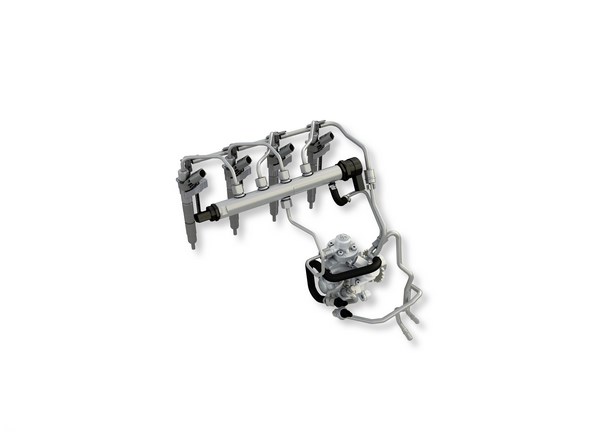
Compact dimensions: a key design goal
The main dimensions of the basic engine with bore, stroke and cylinder spacing substantially determine the overall length and height of the engine.
The cylinder spacing was reduced from 94 to 90 mm in comparison with the previous engine. Bore (82.0 mm) and stroke (92.3 mm) result in an advantageous individual cylinder volume of just under 500 cc and ensure an optimal connecting rod ratio with regard to combustion and friction.
The aluminium crankcase is designed to cope with an extremely high power output (capable of withstanding peak pressures up to 205 bar).
To reduce the overall height, the camshaft drive is on the rear (transmission) side, as in the previous engine.
There, in the crash-protected area, the high-pressure injection pump is also housed on the left-hand side of the engine; it is driven by the timing chain.
To allow the engine to be installed as low as possible in the vehicle, the Lanchester balancing shafts are arranged not below, but on left and right of the crankshaft.
Likewise, as in the previous engine, the oil pump is positioned next to the crankshaft, which facilitates installation in various vehicle architectures.
The compact dimensions of the engine provide even greater flexibility in adapting to different vehicle models while allowing vertical installation of the engine.
Additional space on the right-hand side of the vehicle was created by the offset of the crank assembly: the vertical cylinder axis is offset from the crankshaft centre by twelve millimetres to the left towards the inlet side. This also results in reduced friction of the pistons in the cylinder liners.
Lower consumption: less friction, better combustion
Installed in a comparable vehicle, the new engine consumes around 13 percent less fuel than its predecessor.
Alongside optimised air ducting on the intake and exhaust sides and the use of fourth-generation common rail injection with pressures up to 2050 bar, the fuel saving is due to an around 25 percent reduction in internal friction loss. This was achieved by
- flat steel pistons with innovative stepped combustion bowls and long connecting rods
- NANOSLIDE® coating of the cylinder liners
- offset of the crank assembly
- reduced displacement
- various detail measures, such as on the camshaft drive
Unusual combination: aluminium crankcase and steel pistons
At first glance, the combination of an aluminium crankcase and steel pistons appears unusual, because steel expands less than aluminium when hot, conducts heat less well and is heavier.
This explains why aluminium pistons have been used to date. Yet the Stuttgart engine designers have succeeded in turning these seeming disadvantages into advantages.
As an example, the lesser expansion of steel as operating temperatures rise ensures increasing clearance between piston and aluminium crankcase, reducing friction by 40 to 50 percent.
At the same time, the fact that steel is stronger than aluminium allows very compact, lightweight pistons that even offer additional strength reserves.
Finally, the lower heat conductivity of steel leads to higher component temperatures, thereby improving thermodynamic efficiency, increasing combustibility and reducing combustion duration.
The flat steel pistons allow the connecting rod to be lengthened to 154 mm. Together with the offset of the crank assembly, this enabled the side forces on the pistons – depending on the operating point – to be reduced by up to 75 percent.
The combination of innovative steel pistons with further-developed NANOSLIDE® liner coating results in a reduction in consumption and CO2 emissions of up to four percent.
At lower and medium engine speeds, which play an important part in everyday motoring, the reduction in fuel consumption is even more pronounced.
World premiere in a passenger car: the stepped combustion bowl
Making its debut in a passenger-car diesel engine, the new OM 654 employs Mercedes-Benz stepped combustion bowls – named after the shape of the combustion pocket in the piston.
The combustion system has been completely redesigned. The stepped combustion bowl has a positive effect on the combustion process, the thermal loading of critical areas of the pistons and the ingress of soot into the engine oil.
The efficiency is increased by the higher burning rate in comparison with the previous omega combustion bowl.
The characteristic feature of the specifically configured combination of bowl shape, air movement and injector is its very efficient utilisation of air, which allows operation in the case of a very high excess air factor.
This means that particulate emissions can be reduced to an especially low level.
Exhaust emissions: all set for the future
The new diesel engine is designed to meet future emissions legislation (RDE – Real Driving Emissions).
Development work also focused on the WLTP (Worldwide harmonized Light vehicles Test Procedure), which, in contrast to the NEDC measurement cycle, is aimed at ensuring that the figures for standard and real-world consumption are close together in future.
All components of relevance for efficient emissions reduction are installed directly on the engine.
Supported by insulation measures and improved catalyst coatings, there is absolutely no need for engine temperature management during cold starting or at low load.
In addition to the advantages in terms of emissions, this results in fuel savings, especially on short journeys.
Thanks to the near-engine configuration, exhaust aftertreatment has a low heat loss and optimal operating conditions.
The new engine is equipped with multiway exhaust gas recirculation (EGR). This combines cooled high-pressure and low-pressure EGR.
It makes it possible to significantly reduce the untreated emissions from the engine across the entire engine map, with the centre of combustion being optimised for fuel economy.
The exhaust gas from the turbocharger is sent first to a diesel oxidation catalyst. It next passes the downdraft mixer, in which AdBlue® is added by means of a water-cooled dosing module.
Thanks to a specially developed mixing area, the AdBlue® evaporates over the shortest possible distance in the exhaust gas stream and is distributed very uniformly on the surface of the downstream sDPF (particulate filter with coating to reduce nitrogen oxides).
Positioned behind the sDPF is an SCR catalyst for further catalytic reduction of the nitrogen oxides. Only then does the treated exhaust gas enter the exhaust system.
Noise level: quieter with less vibration
Diesel engines in passenger cars impress with their low fuel consumption and high torque. Also in terms of comfort, they are moving ever closer to their petrol counterparts.
Already in the concept phase of the new diesel engine, optimisations were made to, among other things, the engine block structure and the connection to the transmission; there were also improvements to the gear wheels and air ducting.
The new plastic engine mounts also make an important contribution to the new level of comfort.
Reduced complexity: variants easier to produce
In the last 25 years, there has been a dramatic increase – from significantly less than 100 to currently over 1000 – in the number of output-, vehicle-, emissions- and country-specific variants of Mercedes-Benz diesel engines owing to different legal requirements and technical preconditions, such as the quality of the available fuels.
One of the objectives behind the new generation of engines was to reduce the number of variants to the greatest possible extent.
The new diesel engine achieves this goal on two fronts while at the same time allowing flexibility in manufacturing, which enables the production volumes of the individual variants to be changed at short notice in response to market requirements.
- The engine family is of modular design: the simple exchange of individual modules makes it possible for variants to be configured without having to develop entirely new engines
The interfaces between drive unit and vehicle have been standardised across all model series.
More especially, all the elements of the exhaust aftertreatment system are now configured on the engine itself and no longer on the vehicle.
The strategy
A drive system for the future
In its road map towards sustainable mobility, Mercedes-Benz attaches key importance to the optimisation of modern internal combustion engines alongside hybrid and electric vehicles.
In particular, the economical, clean and, especially in Europe, highly popular diesel engine makes an important contribution to the further reduction of fleet consumption. Mercedes-Benz’s modular family of premium diesel engines is therefore a drive system for the future.
In the medium term, the modular family of engines will find broad application across the entire range of Mercedes-Benz cars and vans.
There are plans for several output variants as well as longitudinal and transverse installation in vehicles with front-, rear- and all-wheel drive.
The premium diesel will therefore play a key strategic part in the CO2 emissions of Mercedes-Benz’s fleet of new vehicles.
Considerable progress has already been made: with a fleet average of 123 g/km, Mercedes-Benz succeeded in 2015 in lowering the average CO2 emissions of the passenger cars it sold in the European Union by six grams compared with 2014.
The average fleet consumption in 2015 was thus 5.0 litres/100. Over just two vehicle generations, fuel consumption has been lowered by more than 40 percent in 15 years.
Mercedes-Benz currently offers 68 models with CO2 emissions below 120 g CO2/km, with 108 models having been awarded the energy efficiency label A+ or A. With 87 models, diesel engines are disproportionately represented among these champions of efficiency.
Financed by the EU Commission, the Odyssee Mure Study[1] concludes for the market as a whole that the diesel engine, in particular, has played a pioneering role in reducing the average consumption of new vehicles.
According to the study, those eleven EU countries in which the average consumption of new cars is below 5 litres/100 km have a diesel market share of over 70 percent.
Overall, diesels made up around 53 percent of the market in Europe (EU and EFTA countries) in 2014[2].
Road map towards sustainable mobility: the diesel engine is indispensable
Mercedes-Benz’s development strategy is aimed at securing the company’s long-term leadership in the segment for premium automobiles. To this end, three key areas have been identified in the road map towards sustainable mobility:
- optimisation of the internal combustion engine with state-of-the-art technology as well as targeted optimisation measures on the vehicle, such as in the areas of aerodynamics, lightweight design and energy management. A key pillar of this strategy is the launch of the new family of premium diesel engines.
- Further efficiency gains through needs-based hybridisation. There is currently a very strong focus on the Mercedes-Benz plug-in hybrid initiative: By 2017, there will be ten models on the market. Following the unveiling of the S 500 e in 2014 and the successful launch of the C 350 e in March 2015 (saloon and estate models), August 2015 saw the fourth model in dealer showrooms in the form of the GLE 500 e 4MATIC. The fifth member of the group, the GLC 350 e, is set to follow in spring 2016, and the saloon version of the E 350 e will come onto the market before the end of this year.
- Locally emission-free driving with fuel cell and battery vehicles. Following the launch of the battery-electric B 250 e in 2015, 2016 will see the market entry of the fourth-generation smart electric drive, which, alongside the familiar two-seater and cabriolet variants, will also be available in a four-seater version. The company is additionally working on an intelligent concept for a cross-model architecture for a vehicle with a range of between 400 and 500 km. Equally, development of the new generation of Mercedes-Benz electric vehicles with fuel cell drive is on the way. The company plans to launch a model based on the GLC in 2017.
Mercedes-Benz is also working on the development of clean and alternative fuels that are not in competition with food production.
[1] http://www.indicators.odyssee-mure.eu/market-diffusion.html
[2] http://www.acea.be/statistics/tag/category/diesel-penetration
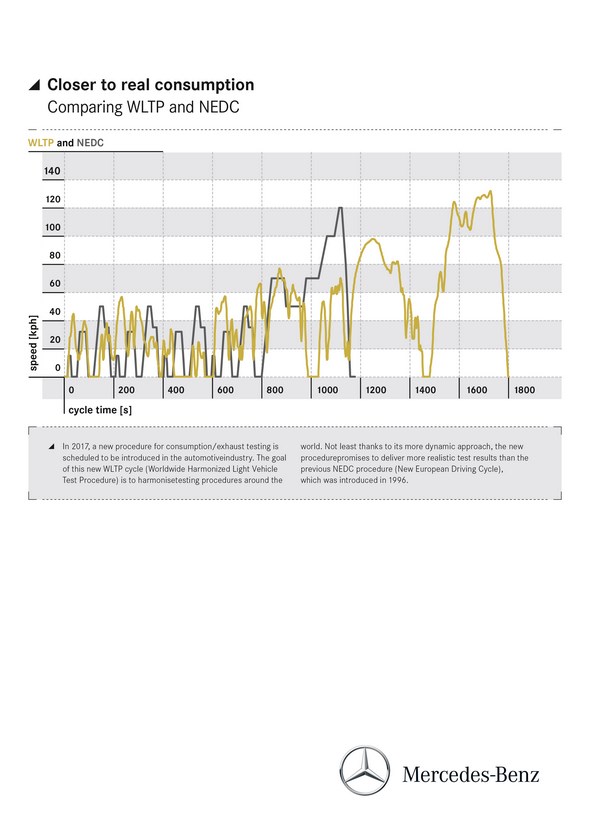
Under the microscope: testing
Systematic approach to testing
Before a new Mercedes-Benz engine is endurance-tested on the road, it already has an extensive testing programme behind it – including on the engine dynamometer at the testing facility in Stuttgart-Untertürkheim.
The building houses 24 state-of-the-art engine dynamometers on each of its three floors. These 72 test rigs are in round-the-clock operation, 365 days a year.
The new OM 654 diesel engine spent a total of over 25,000 hours there before being approved for use in the future E-Class.
A host of different road/load situations can be simulated on the test rigs in order to cover all conceivable applications, such as hot/cold starting, stop-and-go and endurance runs under a wide range of different conditions.
Even steep hill climbs are simulated in the lab: on a so-called pivoting test rig, the engines are tilted at up to 40 degrees to check the load on, for example, the oil system.
The engines at various stages of development are subjected to a time-accelerated stress test. The test rig programmes have a duration of between 500 and 2400 hours, including both many high full-load and low part-load cycles.
The thermal behaviour and durability of components are tested under full load. Yet especially low loads can also be a real test for the engine, as this promotes the formation of so-called black sludge in the engine oil.
There are also cases of high loading, such as a severe reduction in the coolant temperature from 110°C to approx. 25°C within max. 60 seconds and fast acceleration of the engine up to rated speed under full load while the coolant is still cold.
Alongside the durability of the components, the main development goals are fuel economy, emissions and drivability in the interaction between engine, transmission and vehicle.
This calls for a great deal of detailed work, first on the chassis dynamometer and later in road tests. These include test drives at -30°C in northern Sweden or at over 40°C at an altitude of 2500 metres in Spain.
There are also many different test rigs, such as the climate tunnel and the altitude chamber, which can simulate altitudes of up to 4000 metres.
Endurance testing is separate. It includes, for example, the accelerated test, which uses a high-speed track to simulate a distance of 250,000 kilometres as driven by a customer.
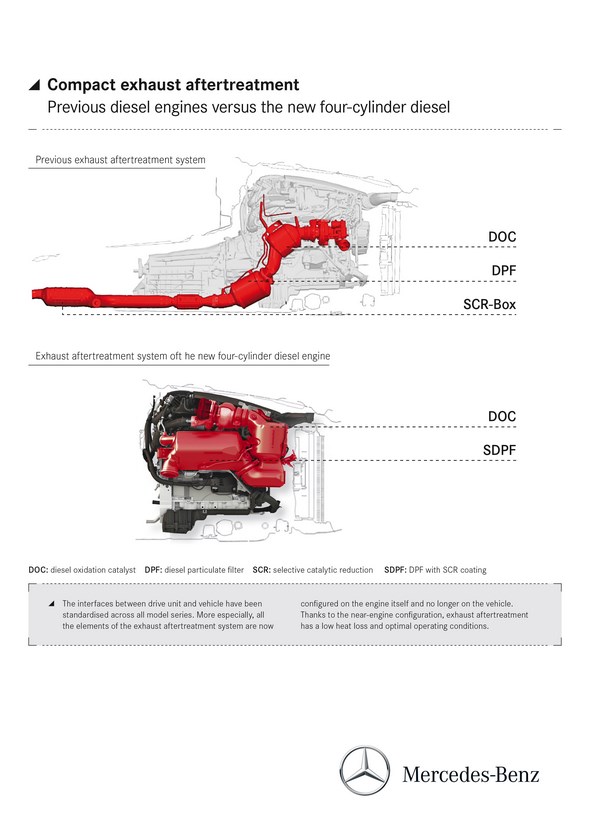
Energy recovery: test rigs that generate power
The energy generated by the engines while under test is recovered as fully as possible. The engine testing facility in Untertürkheim is certified as a combined heating and power plant, for only active machines are used to monitor and measure the engine power.
Unlike in a vehicle, the power from the engine is not used to propel the vehicle in a forward direction, but is converted into electrical energy and fed back into the power supply.
Under the microscope: development and production
New architecture makes for flexible production
Today, developing engines of modular design is more important than ever before. This is because ever more output-, vehicle-, emissions- and country-specific variants quickly lead to a corresponding number of engine and component variants.
Also, the exhaust gas aftertreatment equipment has to date been installed mainly on the vehicle. This has necessitated the development of a corresponding number of exhaust systems and applications – at high cost.
Consequently, one of the ideas behind the new generation of engines was to significantly reduce the number of variants while allowing flexibility in production.
Implementation in series production was supported by the fully digital process chain.
One of the key requirements for the new modular Mercedes-Benz powertrain architecture was the compact design of the basic engine, because the main dimensions with bore, stroke and cylinder spacing substantially determine the overall length and height of the engine.
In comparison with the previous OM 651 engine, the cylinder spacing on the OM 654 was reduced from 94 to 90 mm.
This makes it possible to achieve overall engine lengths that have conventionally been the preserve of the V-engine.
The result is a powertrain architecture with
- uniform positioning of the engines across the different model series
- a transmission flange that is always in the same place in the vehicle
- a near-engine, uniform configuration of the exhaust system
- a significant reduction of both the exhaust system variants and the vehicle-dependent components
- uniform media interfaces (vacuum, water, fuel, air) to the vehicles
- high commonisation of the engine family.
Digital process chain: faster to production – and without detours
Digitalisation is already in full swing at Mercedes-Benz: in the powertrain area, the fully digital process chain extends from the design to the machining of the components and their installation.
First, the designers create a digital 3D model of the engine with all the drawing data. Before a real 3D model is developed as a blank for the foundry, the casting concept is verified by means of extensive simulation.
This includes, for example, so-called core-shooting simulation. Cores are required in the case of castings that have cavities.
Core shooting involves a mixture of sand and binders being “shot” into the core mould. Simulation visualises this process in virtual form over time.
It takes account of such factors as the difference in flow between sand and air. After the simulation phase, “rapid prototyping” results in the first moulds being produced literally overnight by the 3D sand printer.
The planning and implementation of the downline production steps also make use of digital techniques. For instance, the machining stage is likewise based on a 3D model.
Simulation covers the individual machining steps while optimising the sequence, cycle times, order of machining and tool changes.
Allowance is also made for differences in the type of mounting. Finally comes the generation of the NC (Numerical Control) program for controlling the machines.
In addition, the machining process itself is validated through simulation of the sequence and tools (accessibility of tools, collision with clamping fixture, interfering contours).
This is followed by visualisation and virtual commissioning of the machining cells and transfer of the NC programs to the machining equipment.
Once series production has started, an analysis of the process data leads to continuous process optimisation.
Installation of the individual components is similarly planned in detail using digital simulation.
This includes, for example, the assignment of tools and installation fixtures to the individual stations, organisation of the flow of materials including the supply of materials (e.g. delivery concept, ergonomic arrangement) and validation of the entire installation stage in the context of digital process simulation.
Flexible production concept: defined mix of petrol and diesel engines
In combination with a flexible production concept, the modular engine concept creates the basis for a “breathing” market-oriented mode of production, the focus being on agility and high flexibility.
This system allows petrol and diesel engines with different numbers of cylinders to be produced in a defined mix.
The production volumes of the new engines can also be dynamically adapted to suit the needs of the market.
All of this is made possible by a new, modular production technology. The machines are uncoupled from the workpieces by so-called adapter plates. This results in significantly improved flexibility in terms of production volumes and variants.
The main components of the new four-cylinder diesel engine are manufactured by Mercedes-Benz at its Untertürkheim plant, while assembly is carried out at the plant in Kölleda.
The new WLTP test cycle
Closer to real-world consumption
In 2017, a new procedure for consumption/exhaust testing is scheduled to be introduced in the automotive industry.
The goal of the new WLTP cycle (Worldwide Harmonized Light Vehicle Test Procedure) is to harmonise testing procedures around the world.
It is intended to deliver more realistic test results than the previous NEDC procedure (New European Driving Cycle), which was adopted in 1992 and introduced by the European Commission in 1996.
The NEDC took over from the Euromix method with its constant driving at 90 and 120 km/h and for the first time included precisely defined driving cycles to be carried out on standardised and calibrated test rigs.
The advantage: the results of the tests are comparable and reproducible across all manufacturers and test rigs.
And it is not just the fuel consumption that is measured, but also the emissions, such as those of nitrogen oxides and particulates. This made it possible for the first time to set legal limits.
Yet the NEDC also has a number of drawbacks. For example, the effect of a car’s aerodynamics – a key efficiency factor in real-world inter-city driving – is under-represented at the comparatively low speeds in the NEDC.
Also, there is this: the NEDC does not apply in key markets outside Europe. While important regions such as the USA/Canada or Japan have their own cycles, China has additional procedures on top of the NEDC.
In the case of a globally active automaker, this results in tremendous expenditure on testing and development as well as in a multiplicity of technical variants of automobiles that are to all intents and purposes identical.
For all these reasons, Mercedes-Benz has from the outset supported the efforts to introduce a more realistic and, if possible, globally valid test cycle.
The WLTP in comparison with the NEDC
| Cycle | WLTP | NEDC | |
| Starting temperature | Cold | Cold | |
| Cycle time/duration | min | 30 | 20 |
| Percentage of stops | % | 13 | 25 |
| Cycle length | km | 23.5 | 11 |
| Average speed | km/h | 46.6 | 34 |
| Max. speed | km/h | 131 | 120 |
| Average driving power | kW | 7 | 4 |
| Max. driving power | kW | 47 | 34 |
| Optional equipment of the specific model | is taken into consideration for weight, aerodynamics, rolling resistance | only wheels& tyres | |
| Climate control | no | no | |
| Test temperature | °C | 23 | 25 +/- 5 |
| Temperature for additional EU test | °C | 14 | – |
| Test weight | Vehicle weight plus representative payload | Inertia weight class | |
| Other changes compared with NEDC in relation to | preconditioning, driving resistances, plug-in hybrids – | ||
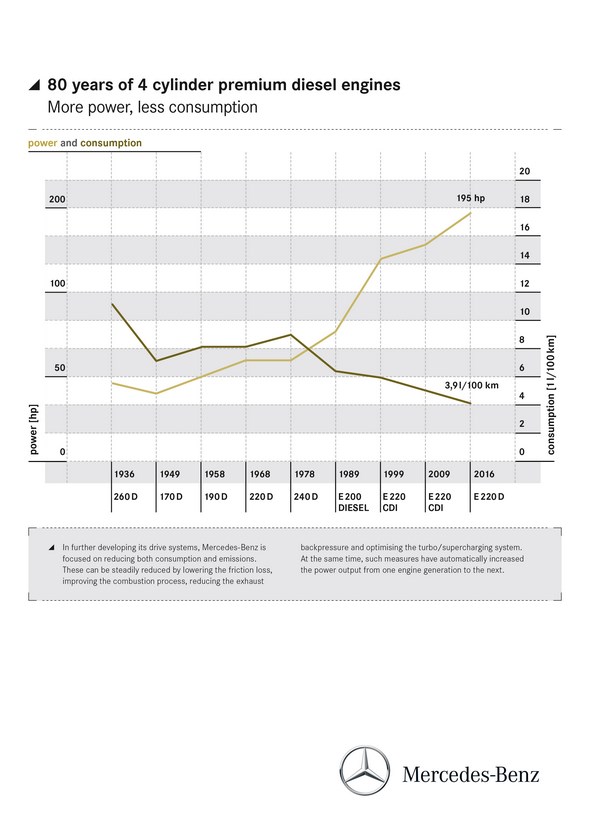
Limitations of a standardised cycle: between local and global
The WLTP is closer to what happens in real-world traffic and offers a more precise test method than the current NEDC.
It defines clear boundary conditions for testing and thus delivers results that are more accurate, more consistent and more reproducible.
Even so: a standardised cycle cannot fully cover the range of real-world consumptions and emissions around the globe. For example, there is too much difference in
- climatic conditions between the tropical regions in Asia and the long winters in Russia. There are also seasonal variations
- traffic conditions and traffic density in mega cities compared with little-used motorways or country roads
- road profiles from the mountainous regions of Switzerland to the lowland plains of northern Germany
- vehicles – from small compacts in India to full-grown SUVs and pick-ups
- driving habits and driver temperaments
- use of ancillary consumers such as air conditioning or lighting.
In addition, it is planned in Europe to introduce a measuring procedure for Real Driving Emissions (RDE). This, too, is actively supported by Mercedes-Benz.
It uses a portable emissions measurement system (PEMS) for measuring the pollutant emissions during real-world vehicle operation.
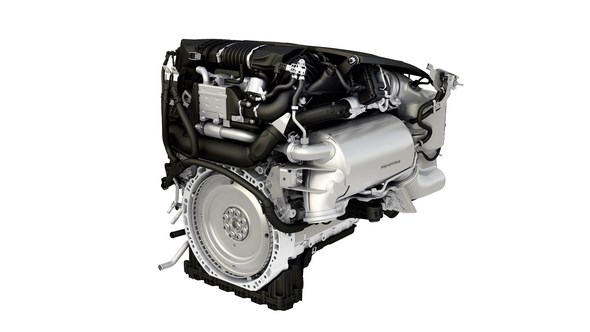
CO2 emissions of Mercedes-Benz: almost halved since 1995
European legislation has set challenging targets for the further reduction of consumption and CO2 emissions in road traffic: by 2020, the average emissions of the new-vehicle fleet must fall to 95 g CO2/km (corresponding to 4.0 litres of petrol or 3.5 litres of diesel/100 km) – measured according to NEDC.
The method for converting the NEDC targets to future valid WLTP targets is currently being developed under the aegis of the EU Commission.
There applies the principle of “comparable stringency”, which means that the introduction of the WLTP should not result in any tightening of targets for manufacturers.
Mercedes-Benz is on the right track. In two decades since 1995, the average consumption of the passenger car fleet has fallen by almost half from 9.2 litres/100 km (230 g CO2 /km) to 5.0 litres (125 g CO2/km).
Already today, Mercedes-Benz Cars has 68 models that emit less than 120 g/km – and 108 models with the efficiency label A+ or A.
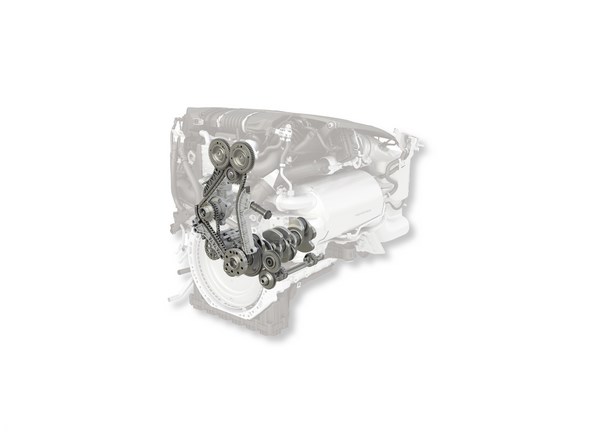
The history
Pacesetter in diesel technology
Mercedes-Benz is the pioneer of the diesel engine – in both commercial vehicles and passenger cars. From its early days until into the 1970s, the diesel engine was considered a model of efficiency, durability and reliability – while, however, being rather sluggish.
In the years that followed, numerous innovations transformed the diesel engine into a high-torque wonder machine that is both economical and clean.
The milestones on this journey include turbocharging, four-valve technology, electronic timing and common rail direct injection.
The history of the diesel engine in Mercedes-Benz passenger cars began back in 1936. Mercedes-Benz was the first manufacturer to take the then bold step of installing a four-cylinder diesel engine in a series-produced passenger car.
The same pioneering spirit was reflected in each newly developed engine of its time. Every new engine from Mercedes-Benz was a technological milestone: more powerful, quieter and cleaner.
From an early stage, the idea was to make engines of modular design in an effort to cut costs, use common parts and make more efficient use of production lines.
As early as the 1960s, Mercedes-Benz used such concepts, for example in the OM 615, OM 616 and OM 617 diesel engines.
These efforts were stepped up in the successor model series (OM 601, OM 602 and OM 603), in which four-, five- and six-cylinder diesel engines were developed with a very high number of common parts – pistons, connecting rods, prechambers and injectors were in this case of identical construction.
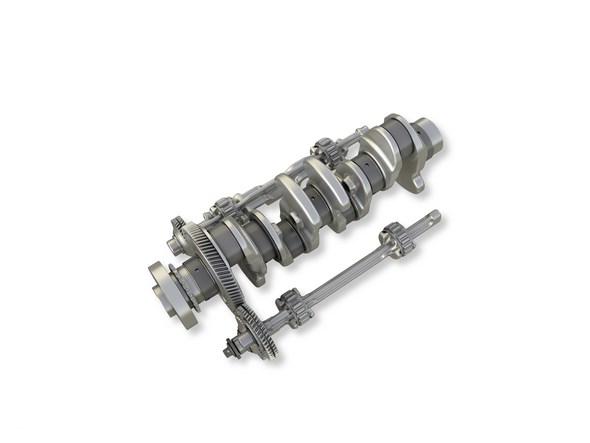
A change of character: diesel engines that were fun to drive and environmentally compatible
The diesel engine’s change of character towards driving pleasure and environmental compatibility is most clearly demonstrated by the figures for specific power output.
For example, the output per litre of displacement (specific output) rose as follows:
- 18 hp/l (13 kW/l): 1936 in the world’s first diesel-engined passenger car, the Mercedes-Benz 260 D with just 33 kW (45 hp)
- 28 hp/l (20 kW/l): 1975 in the “Stroke 8” (W 115), the 200 D coaxed
40 kW (55 hp) out of 1988 cc - 58 hp/l (43 kW/l): 1995 saw the launch of the E 220 CDI (W 210) with
92 kW (125 hp) - 100 hp/l (72 kW/l): The middle output variant of the brand-new four-cylinder diesel engine developed 143 kW (195 hp) from 1950 cc of displacement.
Thus, the specific output grew by over 500 percent in 80 years. And that is not the end of it: the new engine is designed for power outputs up to 90 kW/l.
Similarly dramatic is the increase in torque, the factor that determines the engine’s pulling power from low revs.
From 98 Newton-metres in the 170 D of 1949, the torque climbed to 113 Nm in the 200 D (1975) and 300 Nm in the E 220 CDI (1995) to 400 Nm in the coming E-Class. In other words, around 55 Newton-metres per litre of displacement in 1949 stand compared today with 205 Nm/l, almost four times as much as back then.
More driving pleasure and environmental compatibility: the key diesel innovations of the last four decades
In 1974, with the 240 D 3.0 (W 115), Mercedes-Benz unveils the world’s first five-cylinder passenger car and hitherto most powerful standard-production diesel passenger car: three-litre displacement, 80 hp and 175 Newton-metres of torque.
In 1978, with the world’s first turbocharged standard-production diesel passenger car, the brand takes an important step towards the modern, dynamic diesel.
However, the 300 SD Turbo Diesel (W 116), whose five-cylinder engine puts out 115 hp, is marketed only in the USA.
In Germany, the same pioneering role is played in 1980 by the 300 TD Turbo Diesel (S 123). This was preceded in 1978 by tests with turbocharged diesel engines in the C 111 experimental vehicles.
In 1985, the 300 SDL (W 126) shows in the USA that the diesel particulate filter is not a very modern invention – the first standard-production passenger car with this form of exhaust aftertreatment.
In 1993, four-valve technology celebrates its world premiere in diesel engines of the Mercedes-Benz C- and E-Classes (W 202 and W 124).
In 1995, the first Mercedes-Benz diesel passenger car with direct injection makes its debut as the E 290 Turbo Diesel (W 210).
In 1997, the next decisive technological leap is made: the introduction of common rail direct injection in combination with four-valve technology (W 202). This technology has since stood for unsurpassed fuel economy and a tremendous increase in torque.
In 2000, the S 400 CDI (W 221) with V8 engine and 184 kW (250 hp) as well as 560 Newton-metres of torque becomes the world’s most powerful diesel passenger car.
In 2003, Mercedes-Benz is the world’s first automotive brand to offer the combination of diesel particulate filter and Euro 4 emissions standard (W 203 and W 211). In the same year, the unveiling of the first synthetic diesel fuel from biomass – SunDiesel – points to the future of the diesel engine.
In 2004, Mercedes-Benz becomes the first automotive brand to offer all its diesel passenger cars as standard with particulate filter and Euro 4 emissions standard.
In 2004, Mercedes-Benz also unveils a further milestone at the International Motor Show for Commercial Vehicles in Hanover: the new BlueTEC technology, which enables trucks and buses to comply ahead of time with the Euro 4 and Euro 5 emissions standards.
In 2006, the clean diesel with BlueTEC is also made available in passenger cars. The first standard-production model is the E 320 BlueTEC, which launches on the US market in October 2006.
In 2007, this is followed by the E 300 BlueTEC, the first European diesel-engined passenger car, which is on a par with the best petrol models in terms of its exhaust emissions.
In 2009, Mercedes-Benz BLUETEC models with SCR already comply with the Euro 6 limits, which apply to all passenger cars from September 2015.
In 2011, the multiple award-winning NANOSLIDE® cylinder liner technology makes its debut in the V6 diesel engine. Benefits>:4.3 kg less engine weight and 3% lower fuel consumption.
In 2012, the E 300 BlueTEC HYBRID (W 212) becomes the most fuel-efficient luxury-class model in the world. While imposing no restrictions on space, its modular diesel hybrid concept with lithium-ion battery delivers an impressive driving experience thanks to start/stop, energy recovery, boost effect, all-electric mode and coasting.
In 2014, new high-tech steel pistons celebrate their world debut in a standard-production passenger car in the V6 diesel engine of the Mercedes-Benz E 350 BlueTEC. Now putting out 190 kW (258 hp), the saloon consumes just 5.1 litres of diesel fuel per 100 kilometres.
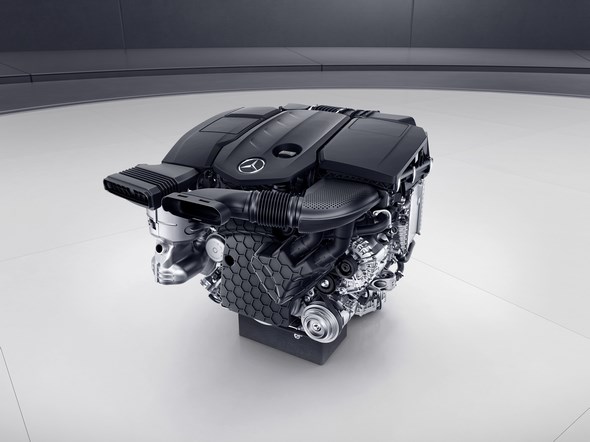
Glossary
Key specialist terms
| AdBlue®: Aqueous urea solution that reduces nitrogen oxides in the exhaust from diesel-engined vehicles by up to 90%. SCR uses AdBlue® to convert the nitrogen oxides in the exhaust into environmentally compatible nitrogen and water. |
| Artemis (Assessment and Reliability of Transport Emission Models and Inventory Systems): European project for broad-based statistical data collection on the driver behaviour of European motorists. This was used to develop the CADC (Common Artemis Driving Cycle), which simulates this driver behaviour for the chassis dynamometer, e.g. at speeds up to 150 km/h. |
| Common rail: Here, all the cylinders of the direct-injection diesel engine are supplied with fuel from a common distribution pipe (common rail). The high pressure line is under a permanent pressure of 2000 bar or higher, which stores diesel fuel and distributes it to the injectors. |
| Cylinder spacing: Dimension between the centres of two adjacent cylinders. It determines the overall length of the crankcase while also limiting the maximum bore of the individual cylinders. Diesel particulate filter: Removes over 95% of soot particles from the exhaust gas. The soot particles are trapped in the diesel particulate filter and burned off at cyclical intervals. |
| EGR (exhaust gas recirculation): NOx formation is influenced primarily by the combustion temperature. Supplying an inert gas to the combustion process lowers the maximum temperatures in the combustion chamber, thereby reducing the formation of NOx. An example of such an inert gas is exhaust gas, a small proportion of which is recirculated to the combustion chamber. Mercedes-Benz employs multiway EGR in the OM 654. This is a combination of low-pressure EGR (the exhaust gas is drawn off after it has been treated and is supplied ahead of the turbocharger) and high-pressure EGR (the exhaust gas is drawn off before the turbine of the turbocharger and before it has been treated; it is supplied behind the charge-air cooler and the throttle valve). At all operating points, this reduces the formation of both nitrogen oxides and particulates even before the exhaust gas undergoes treatment. Multiway EGR was used for the first time on the Mercedes-Benz OM 651 engine for the A-Class model series in the A 220 CDI/A 220 d. Lanchester balancer: The Lanchester balancer consists of two balancing shafts that rotate in opposite directions at twice the speed of the crankshaft. They are each provided with a counterweight (unbalance), the common centre of gravity of which moves up and down in opposite phase to the centre of gravity of the pistons. The purpose of the balancing shafts is to eliminate the free second-order inertial forces that occur in four-cylinder in-line engines. This results in fewer vibrations of the engine. |
| NANOSLIDE®: Innovative and economical process for reducing fuel consumption and CO2 emissions in an internal-combustion engine. An extremely thin, low-friction coating is applied to the inner surfaces of the cylinders in aluminium crankcases. As up to 25 percent of the energy in fuel is used to overcome in-engine friction, particularly at part load, fuel savings of several percent are achievable with NANOSLIDE®. |
| NEDC: The New European Driving Cycle, introduced in the mid-1990s, is a standardised, around 20-minute exhaust gas measurement on the chassis dynamometer using a defined sequence of acceleration and braking operations. Urban driving is simulated two-thirds of the time, while extra-urban driving is simulated one-third of the time. The fuel consumption is calculated from the measured exhaust gas quantity. The objective of the NEDC was to define a standard for checking emission limits and to allow cross-manufacturer comparisons of fuel consumption. |
| Offset: Offset between the longitudinal axis of the crankshaft and the centre axis of the cylinders. This offset has two advantages: the lateral piston force at the instant of ignition is reduced and the crankcase can be of more compact construction. |
| Peak pressure (also ignition pressure or maximum gas pressure): Of key importance for the mechanical loading of the crank assembly and, above all, the pistons, crankcase bearings and crankshaft. |
| Piezo injection: Injection system in which the injectors are provided with a ceramic element. They make use of a piezo ceramic material’s ability to change its crystal structure – and thus its thickness – in a matter of nanoseconds when under voltage. Piezo injectors allow smaller and more accurately dosed injected fuel quantities at high system pressures and operate up to three times faster than solenoid valves. |
| RDE: (Real Driving Emissions) exhaust gas measurement under real on-road conditions. For this purpose, the vehicles are equipped with a portable emissions measurement system (PEMS) and the emissions (e.g. nitrogen oxides) are measured during operation on the road. |
| SCR process: NOx reduction by up to 90% based on Selective Catalytic Reduction). The SCR process is based on the addition of AdBlue® reducing agent into the exhaust gas system. AdBlue® is an aqueous urea solution. When AdBlue® is injected into the pretreated exhaust gas, this releases ammonia (NH3), which then causes the nitrogen oxides to be reduced to harmless nitrogen and water in the downstream SCR catalyst. |
| sDPF: Particulate filter with coating for the reduction of nitrogen oxides by selective catalytic reduction (see SCR) |
| Stepped combustion bowl: A characteristic feature of the pistons of a direct-injection diesel engine is a recess (bowl) in the piston crown in which the injected fuel is swirled and mixed with air. If the bowl is stepped (instead of having the conventional omega shape), this has a number of advantages, such as excellent air utilisation with low particulate emissions and higher efficiency thanks to a higher burning rate. The changed flow conditions in the combustion chamber result in reduced heat loss across the cylinder wall as well as in a more uniform temperature distribution at the cylinder head and reduced loading on the highly stressed valve lands. The overall result is reduced wall heat loss, which likewise contributes to increased efficiency. |
| WLTP: New global test procedure (Worldwide harmonized Light vehicles Test Procedure) for measuring emissions and consumption. The definition of the new test is based on extensive real driving data from all regions of the world. The measurements are carried out in order to guarantee reproducibility and comparability under clearly defined conditions on the chassis dynamometer. The main difference between the new test cycle and the NEDC is its more dynamic driving profiles at higher speeds, a longer distance and test duration, and vehicle-specific shift points. In addition, major changes result from modified test temperature parameters, inclusion of optional equipment, determination of driving resistances and vehicle test weights. The European Commission plans to introduce the WLTP in September 2017. |

